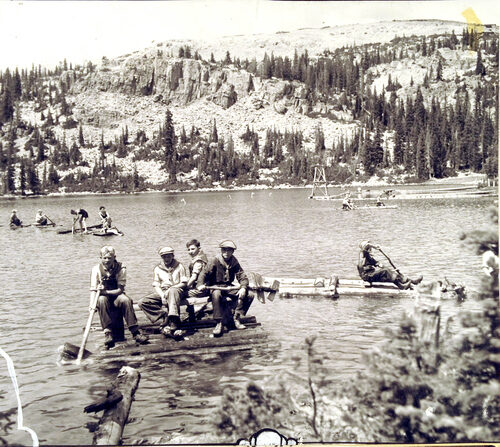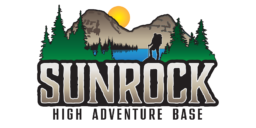"You have to know the past to understand the present" -Carl Sagan
Sunrock High Adventure Base was established in 1929 as the historic Boy Scout Camp, Camp Steiner.
Camp Steiner's long history began when a Salt Lake City troop decided rather than attending a council-sponsored activity, they would pursue a "more rugged and adventurous" camping experience and hike to Heart Lake (later renamed Scout lake) for their summer outing. They had an unforgettable experience and upon returning, shared that experience with the local council.
In the summer of 1934, the United States Forest Service and the Great Salt Lake Council began discussing plans to develop the site as a premier scout camp designed to provide Boy Scouts living in Northern Utah "activities and opportunities unavailable at any other scout camp in the world." Associated activities included contracting with Federal Works Progress Administration (WPA) to cut and stockpile several hundred trees in the Trial Lake area for the use in constructing the facilities at the old Camp Steiner. This camp became known as the "Flagship Camp" for the Great Salt Lake Council of the Boy Scouts of America.
One of the earliest troops to camp at Camp Steiner in the summer of 1930 was Troop 58, which consisted of nearly 150 scouts. The adults' Model-A Fords could not climb the winding mountain road that led to Mirror Lake, so the scouts pushed the cars on the steepest stretches of road, then hiked three miles from Mirror Lake to the camp. For decades, scouts have enjoyed the scenery and natural isolation that only a camp at such a high elevation can offer.
Before its transformation into a Boy Scout camp, the mountains around Camp Steiner were mined for gold by one of the wealthiest families of the early LDS church, the Rhoades family, whose gold mines made them some of he wealthiest members of the Church in the 1850s. Thomas Rhoades, who worked in Sacramento for John Sutter (the prospector who sparked California's 1849 gold rush), eventually settled in the Salt Lake Valley. In 1852, Brigham Young asked Rhoades to mine hidden gold known to the Ute Indian tribe. Rhoades, who learned to speak Ute fluently, made multiple trips to secret mines in the Uinta mountains and would consistently return with "saddlebags full of pure gold ore." The location of the mines died with his grandson, Caleb Rhoades, but his grandson's journals refer to a mine near a "heart-shaped lake surrounded by castles." Camp staffers believe the heart-shaped lake is actually Scout Lake, formerly known as Heart Lake, and that the "castles" refer to nearby mountain peaks. While no one has been fortunate enough to find the Rhoades family's Lost Gold Mine, most, if not all, have enjoyed the real treasure - the camp itself - the Holy Grail of scouting.

Years ago, according to legend, a miner named Hyrum lost an arm and most of his face when explosives were detonated while he was in a shaft. The foreman had accused Hyrum of betraying him and had failed to inform him about the detonation. Although terribly maimed, Hyrum survived and was bent on revenge. Hyrum then disappeared into the forest, where he is believed to continue to lurk in an isolated cabin and can occasionally be seen roaming the area around Scout Lake. Whether or not Hyrum's story is true, many visitors believe his ghost haunts the camp today.
See what others thought
Our Social Media Channels
